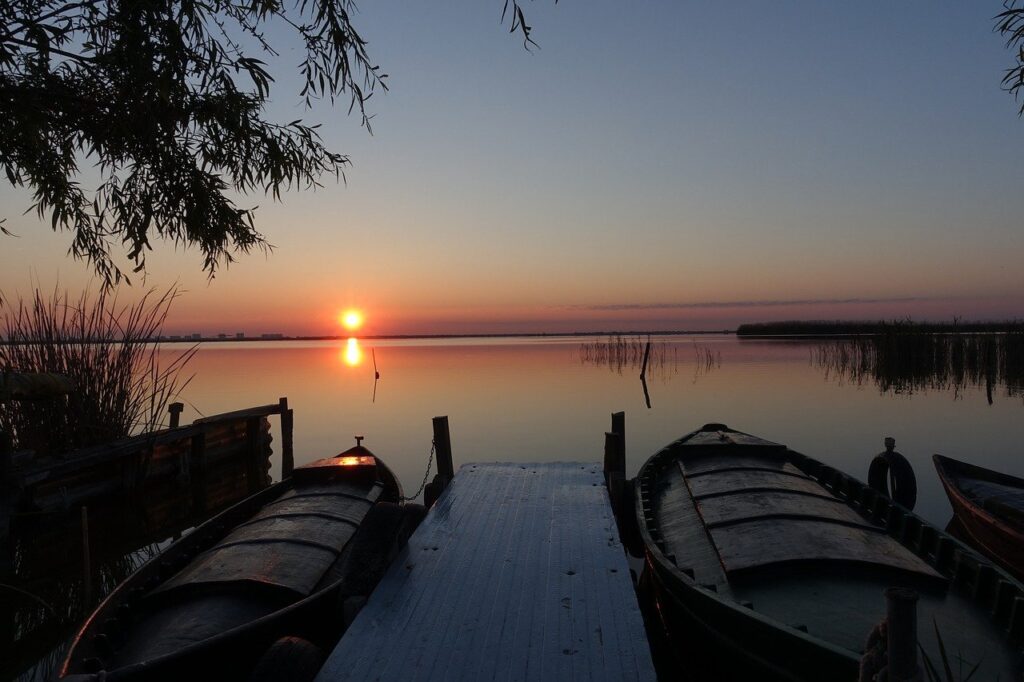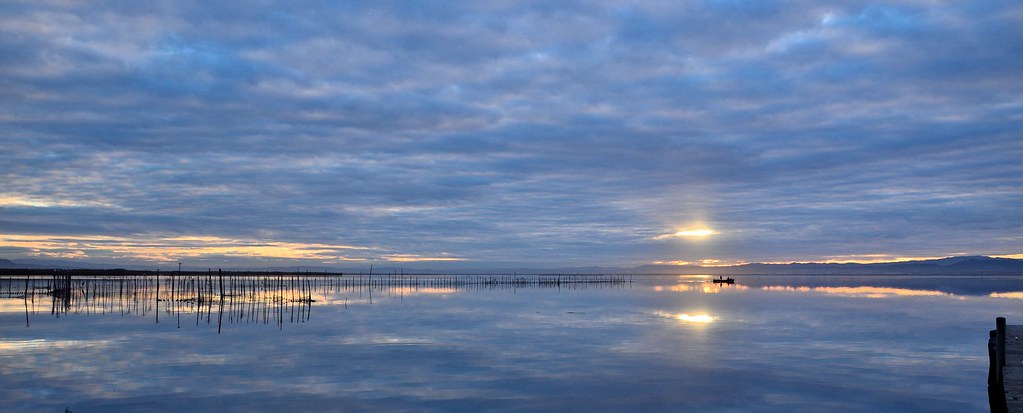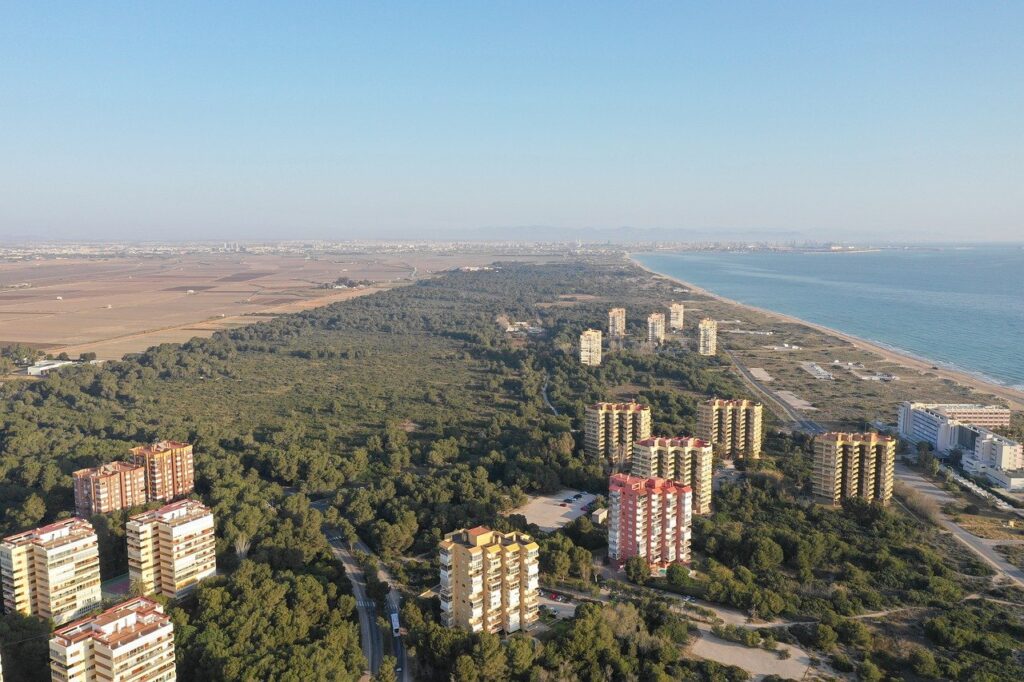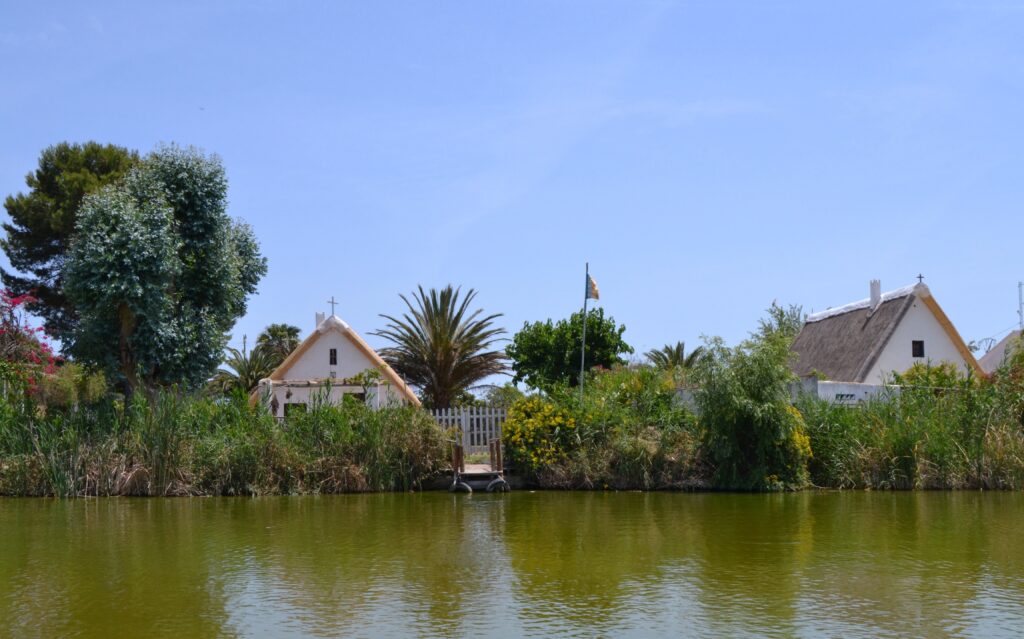(14-minute read time)
Emergency on Planet Earth? British singer Jamiroquai certainly thought so, but Stefano Reposi, inspired by the recent Dulk exhibition at Centre del Carme on the degradation of Albufera, went to explore for himself…
The Department of Agriculture, Environment, Climate Change and Rural development has just announced further measures to prevent further impairment of Albufera’s environmental wealth. Meanwhile, an exhibition of the internationally recognised Valencian artist Dulk highlighting contamination at the national park is taking place at the Carmen Contemporary Cultural Centre (CCCC).
Whether you’re intimate with Spanish traditional cuisine or whether you are yet to savour the first tapas of your life, you’ll surely be familiar with paella. Even though it’s claimed to be the leading and most iconic traditional Spanish dish, few know its provenance: it was created originally between the 15th and 16th centuries by peasants and shepherds living in Albufera, a briny lagoon that stands around 11km south of Valencia, inside the eponymous national park. Surrounded by rice fields and woods for most of its more than 20,000 hectares, this idyllic coastal plain was formed from the alluvia brought by the two waterways Turia and Xúquer, which respectively flow into the northern and southern ends of the park. Aside from taking credit as the pioneer of this celebrated cuisine, Albufera is one of the most important coastal wetlands of the Iberian peninsula, overlooking the Mediterranean. Distracted by the charm of its breath-taking sunsets, it may be difficult while you find yourself plunged into this little slice of heaven to notice the significant changes that have affected the area in the past 60 years as a result of reckless human intervention that has exacerbated the already visible consequences of climate change.

For a better understanding of the deep environmental change that has affected Albufera since the start of the urbanisation process in the 1960s, I met with Manolin, a 57-year-old fisherman who, following in his father’s footsteps, has spent all of his life navigating the waters of Albufera on his narrow wooden boat. Although man’s presence here has reached levels never seen before and the lagoon was attracting an ever-increasing number of tourists before the Covid-19 pandemic took hold, over the past two decades the environmental conditions have improved somewhat, he believes.
“Water quality is way better than 30 years ago because it’s not contaminated from industrial discharges anymore,” says Manolin, before adding wistfully, “or at least, not as much as it used to be.”
The protected area is home to three different subsystems: the lagoon constitutes the only part of Albufera not converted into rice fields, offering a safe haven for the conservation of the avifauna, local birds, many exclusive to this habitat. With 350 species registered, it has been designated a special protection area by Zona de Especial Protección para las Aves (ZEPA). Beyond ground and surface water runoff, it is mainly nourished by the remaining irrigation originating in Xúquer’s river system. It is separated from the sea by a 30km landmass coastal board called restringa that extends southward to Cullera, and was shaped around 6,000 years ago by the sedimentation of materials diverted from the river Turia and other waterways to the north. The abundance of sediment allowed the development of a substantial dune ecosystem that contains a wide range of habitats such as the beach, salt marshes, the sea, mobile dunes and inter-dune depressions locally known as malladas. At last, the marjal is of great economic and environmental significance since its 14,500 hectares of fen are mostly used by farmers for the cultivation of paddy fields, forming the most extended subsystem inside the protected area.

As his father first taught him, Manolin says that just over half a century ago, aside from the small community of fishermen, peasants and shepherds living in close proximity to the swamp, Albufera was a completely uncontaminated area dedicated to rice-based agriculture and fishing. But, following the start of the tourism boom that affected – some say, blighted – the entire Spanish Mediterranean coast in the 1960s, an urban development process that drastically disrupted the balance of its ecosystems began, redefining the surrounding landscape.
While road construction destroyed a massive fragment of the interior dune system, the malladas were filled with sand and stocked with eucalyptus, and the first ridge of dunes was levelled to make way for the 2.5kilometre-long seaside promenade, preventing the exchange processes of sand between the beach and the dune system. As a consequence of more people moving to live in or visit the area, and more industrialisation of the area, pollution in Albufera increased considerably, causing damage to local fauna. Extension works at the harbour immediately to the north side of the natural park disrupted the sediment flow carried by the longshore drift’s current, thereby causing the erosion of the coastal belt, the restinga, that encloses the wetland.
Another crucial aspect is the disappearance of the seagrass beds, which played a crucial role in protecting the beaches from a hydrodynamic process affecting the coastline and the lagoon. This was because of intense trawl fishing carried out throughout the past century. Combined, all these factors led to the total destabilisation of geomorphological processes operating along the coast.
To put it simply, it meant that what had nature taken tens of thousands of centuries to balance and create beaches and dunes in the process, man was able to destroy in just a few years…
– Stefano Reposi
In 1979, the unprecedented devastation of the territory outlined in the first part of this report unleashed a strong civil response that ended up crippling the urbanisation plan on behalf of the “Plan Especial de Protección del Monte de la Dehesa de El Saler” (PEPMDS), a special protection plan approved in 1982 that had restoration of the ecosystem at its heart, and furthermore, preservation of the whole area.
“Back then Albufera was living its biggest decline,” says Manolin. “But when it was nominated as the first national park of the region by the Council of the Generalitat Valenciana in 1986, reaping the benefits provided by its new status as a protected natural area, things began to improve.”
With the aim of setting targets and creating proposals for pragmatic action to preserve and restore the Albufera and its Devesa, in 1980 Valencia City Council established the Oficina Técnica Devesa-Albufera (OTDA). After the Council had spent years looking for an effective and ecologic methodology to apply for regeneration of the dunes, OTDA finally started the restoration plan in the autumn of 1986. Despite all the attempts and efforts made in order to minimise the huge impact of human activity in the territory, there are some irreversible consequences that are becoming increasingly more pronounced under the already visible effects of climate change.

Manolin recalls: “Along with my father we used to catch around 5,000kg of eel overnight at Gola del Perellonet. Nowadays, in the same area, a few hundred is considered a good catch.”
The increases in pollution in the 1970s and 1980s, and the large volume of industrial discharges being discharged into the lagoon, led to drastic changes in water-quality conditions, replacing most part of the indigenous biodiversity with exotic and invasive species, such as the blue crab, flamingos (once very rare and limited), carps, cormorants and moritos, a wading bird peculiar to the area with a long, curved beak a little similar to, say, an oyster catcher, each of which have recently become the symbol of Albufera because of the warmer winters experienced in southern Europe in the last decades. The diversity of its habitats is conducive to the presence of more than 800 botanical species, some of which disappeared in the past 60 years, leaving the remaining endemic ones on the verge of extinction. But as Manolin is keen to point out, in the past two decades there have been considerable improvements.
“Nature gives proof to it. All you have to do is observe. It’s been almost a year since esprella (a leafy aquatic plant) reappeared. Therefore, we saw the coot [a black duck with a white beak] that feeds mainly on esprella, swimming again in the lagoon. Leeches are back, as well as the sea bass.”
When it comes to taking stock of the measures taken by the government so far for tackling the deterioration of the national park, Manolin has little doubt. “You can definitely notice some changes since purifiers were installed,” he says. “Water is less polluted. Though we still have a long way to go.”
According to him, there is essentially a crucial measure the regional council should adopt in order to deal with water contamination: “For a better quality of water the solution would be to drag the lagoon. They should remove some mud and clear it out. Studies were already conducted, but the money never arrived.”
Right before the start of the Covid-19 pandemic, an ambitious plan that could possibly be a lifeline for Albufera national park was initiated. The project is called Wetnet, and it is co-funded by the European Regional Development Fund. It gathers all relevant social stakeholders in the area for better management of wetlands in Europe. The representatives of farmers, fishermen, hunters, tourism companies, research centres and NGOs all sit at the same table to build an agreement called the Wetland Deal, which helped them to define common management objectives and their implementation within the various subsystems enclosed in Albufera, such as the handling of the quality, quantity and administration of water.
By 17 December 2023, Wetnet expects to improve conservation policies by actively involving locals as stakeholders in the preservation and sustainable development of the wetland’s ecosystem, while bringing about institutional cooperation. As with all wetlands, Albufera plays a major role in biodiversity conservation, and only if it lies in good shape will it be able to survive increasingly adverse weather conditions, which are nothing more than a first bitter glimpse of the repercussion of climate change.
In this case, to counter Bob Dylan’s famous injunction, think twice – it’s not just all right, it’s become pressingly, urgently crucial.
Otherwise, we will have no choice but to force our grandchildren to rely on our memories and old photographs to show the beauty of this idyllic corner of nature.
And in the meantime, try to enjoy a proper paella Valenciana – while we still have the chance.
Stefano Reposi is a freelance writer who lives in Ruzafa, Valencia; contact him on stefano.reposi@gmail.com

I like what I see so now i am following you. Look forward to checking out your web page again.
Bueno, lo quitaron de su sitio web muuuuuuuuuuuuuuuuuuuuuu…
Thank you so much! Best, Eugene
Lo siento Anthony, no entiendo lo que quieres decir. Un saludo, Eugene
Your article helped me a lot, is there any more related content? Thanks!
I don’t think the title of your article matches the content lol. Just kidding, mainly because I had some doubts after reading the article.
Thank you for your sharing. I am worried that I lack creative ideas. It is your article that makes me full of hope. Thank you. But, I have a question, can you help me?
Thanks for sharing. I read many of your blog posts, cool, your blog is very good.
Your article helped me a lot, is there any more related content? Thanks!
Thanks for sharing. I read many of your blog posts, cool, your blog is very good.
Your article helped me a lot, is there any more related content? Thanks!